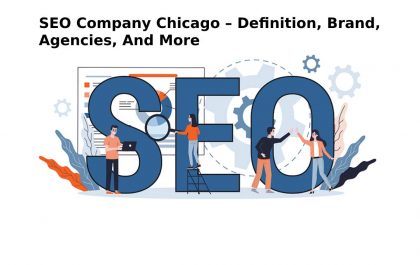Table of Contents
Multichannel Marketing
Multichannel marketing refers to the practice by which companies interact with customers via multiple channels, both direct and indirect, to sell them goods and services. Companies use direct channels, ones in which the company proactively reaches the customer — such as physical stores, catalogs and direct mail — or indirect ones in which they push content via websites or social media, also known as inbound marketing. Other means of reaching customers with multichannel marketing include mobile devices, text messaging, email, company websites, social media, search engine optimization or GPS to track customers’ proximity to goods and services. Multichannel marketing combines the practices of inbound and outbound marketing with the goal of reaching customers on the channel of their choice. In this way, the buying process is more controlled by the customer than the marketer.
Importance of Multichannel Marketing
Multichannel marketing is important for the simple reason that you must be where your customers are. And they are everywhere. If you need another reason, consider this: Multichannel customers spend three to four times more than single-channel customers do. There’s no doubt that customers today have much more control over the buying process than marketers do. Thanks to the proliferation of available channels, customers have more choices than ever when it comes to how they want to get information.
Today there are more ways to reach customers – both in terms of number and variety of channels – than we could have imagined not so long ago. And as the number of channels continues to rise – and it will – the need to embrace multichannel marketing will become not only a good idea, but a critical one.
Benefits of Multichannel Marketing
Marketers have lauded multi-channel marketing for decades, with one study claiming that multi-channel customers spend two to five times more than single-channel customers. Let’s illustrate why multi-channel marketing strategies deserve this reputation.
Expanded Reach
When marketers expand their marketing efforts to new channels, they increase their reach among members of their potential audience. Many customers interact on a limited number of channels – so by expanding your campaigns to encompass more channels, it’s possible to find customers with untapped purchasing potential.
Increased Engagement
An increased number of channels often translates into a higher number of potential customer touchpoints. This doesn’t only give consumers more opportunities to engage with brands, it also opens up new channels of communication between the organization and the customer.
Reach Consumers on Their Preferred Channel
Consumers interact with a lot of different sources of media every day – instead of waiting for customers to find their brand, marketers need to uncover which channels these consumers prefer to use and meet them where they are. So, a customer who has a cursory interest in your product or service may want to receive expository advertisements on television, while a customer that is almost ready to purchase may want to read detailed reviews about your brand online.
Combined Channels are More Effective
When marketers create a strategy that ties together campaigns from multiple media channels, it creates opportunities for more impactful messages that are mindful of the customer journey. It’s possible to mix and match a variety of channels and messages, but let’s take a closer look at two proven examples of channels that can be combined for more effective campaigns:
Social Media & Television
Nielsen Research found that campaigns with touchpoints across both television and Facebook experienced a 12 point lift in brand recall compared to campaigns that took place on a single channel. This is because social media helps reinforce marketing messages by reaching potential customers on a frequent, highly targeted basis.
Radio & Television
Radio adverts are proven to help consumers remember television advertisements. When these two channels are combined, brand recall for television advertisements has been shown to improve by 35 percent. It is theorized that this effect occurs because it is very cost-effective to frequently expose consumers to short radio advertisements. Then, brands can solidify their image through more impactful and engaging television commercials.
Challenges Of Multichannel Marketing
Targeted messaging
Thanks to the plethora of channels and choices facing customers, delivering the right message to the right audience isn’t enough. Not only must your customers receive your message, but they also must be attentive, receptive and willing to act – regardless of the channel.
Highly choreographed campaigns
Expecting customers to change channel or device preferences is unrealistic. As a result, marketers must constantly develop and coordinate highly orchestrated touch points and micro-campaigns that span multiple channels fluidly, in a way that the customer finds meaningful and trustworthy.
Marketing response attribution
It is increasingly difficult to know which channels, campaigns or sequence of touch points contributed to qualified conversions and sales. Knowing what triggered each response would enable marketers to assess whether or not their marketing efforts were getting the best results.
Conclusion
Multi-channel refers to the use of several media channels for spreading marketing messages. Multichannel marketing combines various platforms to amplify your campaign’s frequency and reach, creating more effective messaging. One channel is often not enough for a robust marketing campaign since audiences tend to frequent many different channels. Although multi-channel marketing is more effective than single-channel strategies, marketers should consider extending to even more sophisticated strategies such as cross-channel marketing.
Also Read – Cash App Hack No Human Verification – About, Coin Master, Fire Diamond Hack, And More
Related posts
Featured Posts
Video Creator Online – Definition, Easy Online Video Maker, Tips, And More
Definition Video Creator Online – Power your business with unlimited videos Bring any idea to life in minutes – by…
SEO Company Chicago – Definition, Brand, Agencies, And More
Definition SEO Company Chicago – An SEO Consultant in Chicago and anywhere in the world is responsible for taking all…


